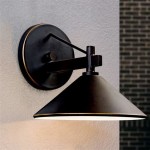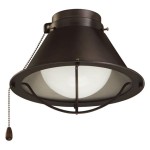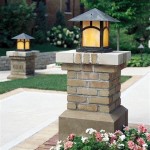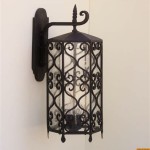How to Plant Pots Outdoors
Planting in pots offers numerous advantages, such as flexibility in location, control over soil conditions, creative decorative possibilities, and the ability to grow a variety of plants in restricted spaces. Successful outdoor potted planting necessitates thoughtful planning and execution. This guide provides a comprehensive breakdown of the essential steps involved.
1. Selecting the Right Pots
The success of your outdoor potted planting hinges on choosing the appropriate pots. Consider the following factors when making your selection:
- Material: Terracotta, plastic, metal, and ceramic are just some of the materials available. Terracotta is porous, allowing for better drainage but drying out faster. Plastic is lightweight and durable, while metal tends to heat up in the sun. Ceramic offers a decorative appeal but can be prone to cracking.
- Size and Shape: The pot should be adequately sized to accommodate the plant's root system and provide ample space for growth. Consider the plant's mature dimensions, as well as the pot's shape, which influences drainage and stability.
- Drainage: Adequate drainage is crucial to prevent root rot. Ensure the pot has drainage holes at the bottom. If not, drill some yourself. Pot feet or saucers can be used to elevate the pot and facilitate drainage.
2. Preparing the Soil
The right soil mix is vital for plant health. Opt for a potting mix specifically designed for outdoor use and tailored to the plant's needs. Here's what to keep in mind:
- Drainage: The soil should drain well to prevent waterlogging, which can harm roots. Look for mixes containing ingredients like perlite or vermiculite, which improve drainage and aeration.
- Nutrients: Plants require essential nutrients for growth. Choose a potting mix that provides a balanced blend of nutrients. If necessary, consider adding a slow-release fertilizer to ensure sustained feeding.
- pH: Different plants have varying pH preferences. Use a soil pH testing kit to determine the soil's pH and adjust it accordingly by adding lime to raise the pH or sulfur to lower it.
3. Planting the Plants
Once the pot and soil are prepared, you're ready to plant. Follow these steps to ensure a smooth and successful planting process:
- Remove from Container: Carefully remove the plant from its nursery container, gently loosen any tightly packed roots, and ensure the root ball is free from any obstructing material.
- Position in Pot: Place the plant in the center of the pot, ensuring that the top of the root ball sits slightly lower than the rim of the pot. This allows for watering without spilling.
- Fill with Soil: Add potting mix around the plant, ensuring it fills the pot and covers the root ball, leaving about an inch or two at the top for watering.
- Water Thoroughly: After planting, water the plant thoroughly to settle the soil and hydrate the roots. Continue to water regularly, checking the soil moisture levels.
4. Choosing the Right Location
Selecting the best location for your potted plants is crucial for their well-being. Consider the following factors:
- Sun Exposure: Most plants require at least six hours of direct sunlight daily. However, some thrive in partial shade, while others prefer shade. Research the light needs of your chosen plants and choose a location accordingly.
- Wind Protection: Depending on the plant's size and sturdiness, windy locations might require protection. Potted plants are more susceptible to wind damage than those planted in the ground.
- Accessibility: Opt for locations that are readily accessible for watering and maintenance. Consider any potential obstacles, such as walls, furniture, or walkways.
5. Providing Ongoing Care
Planting in pots requires consistent care and attention to promote healthy growth. Follow these guidelines for ongoing maintenance:
- Watering: Water your plants regularly, ensuring the soil is consistently moist but not waterlogged. The frequency of watering will depend on factors like the plant's water needs, the pot's size, and the weather conditions.
- Fertilizing: Potted plants require regular fertilization to replenish the nutrients depleted by the plants. Use a balanced liquid or slow-release fertilizer according to the manufacturer's instructions.
- Pest and Disease Control: Regularly inspect your plants for signs of pests or diseases. Take prompt action to address any issues using appropriate pest control methods or fungicides.
- Pruning: Pruning helps maintain the plant's shape and encourages healthy growth. Consult a gardening guide or horticultural expert for pruning techniques specific to your plant species.

Make A Statement Best Extra Large Pots For Indoor Outdoor Plants Flower Power

24 Stunning Container Garden Planting Ideas A Piece Of Rainbow

7 Best Planter Materials Expert Guide To Help You Choose Your Next Jay Scotts Collection

The Best Low Maintenance Plants For Outdoor Pots And How To Take Care Of Them Growing Family

Everything You Need To Know About Container Gardening

Outdoor Garden Pots Green Pastures Centre

Fall Container Gardens Gardening Flower Pots Outdoor

Outdoor Planters Pots Garden Tools For The Patio Crate Barrel

Pots Containers Plantscapes

49 Best Shrubs For Containers Bushes Pots Flower Outdoor Container Gardening Garden







